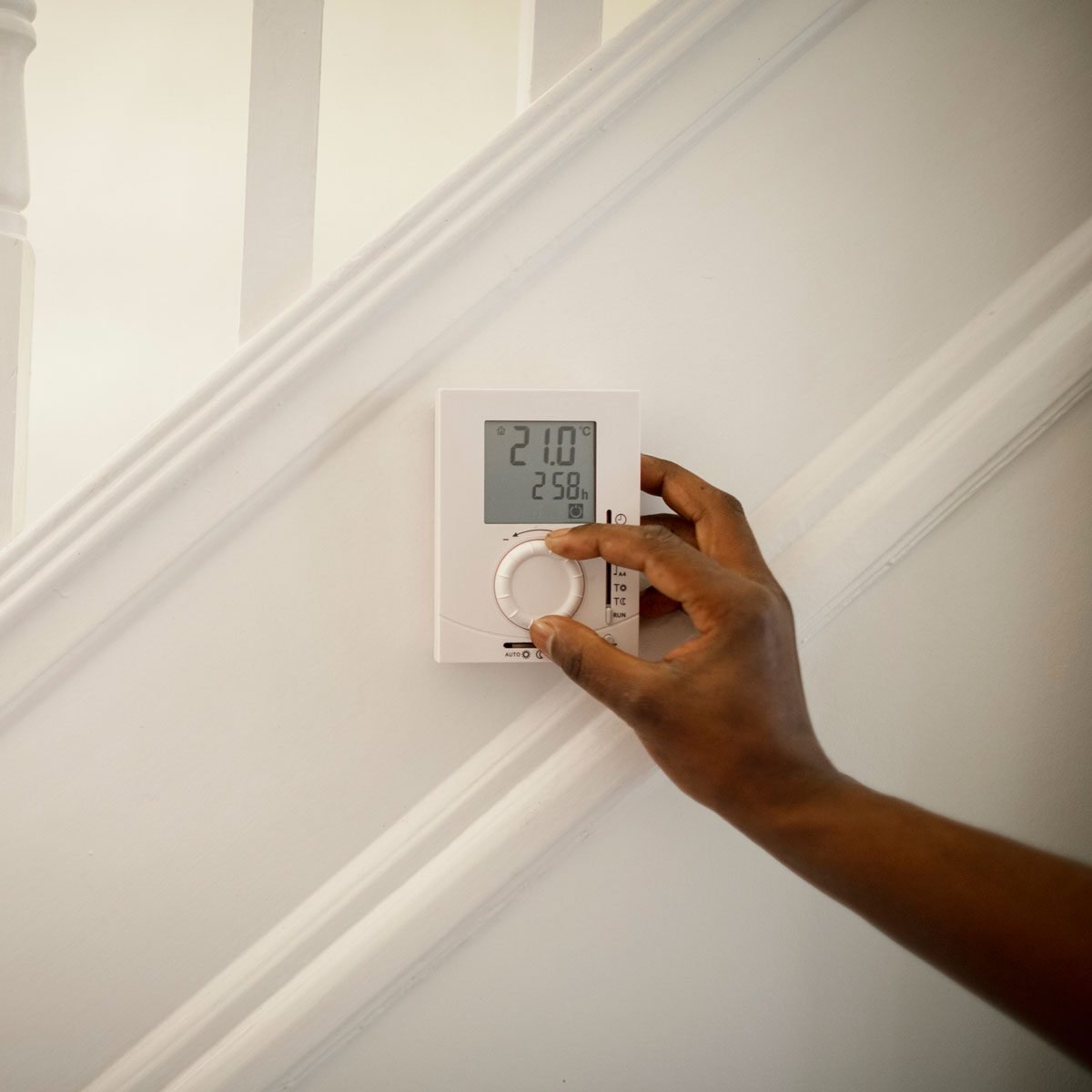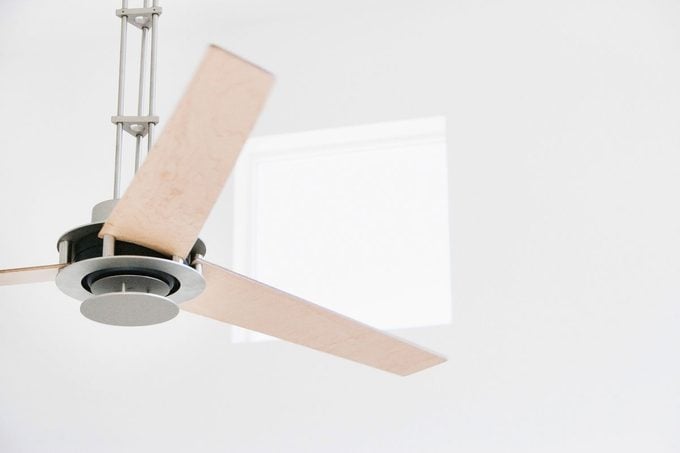Too hot? Too cold? Stay comfortable and save on energy bills by figuring out what temperature to set your thermostat this summer.

What’s the Best Thermostat Setting for the Summer?

When summer is in full swing and it’s time to switch on the air conditioning, you may find yourself in one of two camps: Complaining the thermostat setting is too cold, or uncomfortably warm because someone set it too high.
No one likes sweating while they’re relaxing in their home, just as no one likes to wear a woolly sweater in July. Let’s take a look at the ideal temperature to set your thermostat in the summer, keeping everyone comfortable while preventing your energy bill from going through the roof.
On This Page
Ideal Thermostat Setting for Summer
Just as 68 F is considered the ideal winter thermostat setting, experts call 78 F the magic number for the summer months. This interior temperature should be amenable to most members of your household.
According to energy provider Direct Energy, even if family members need a little time to adjust to it, 78 F hits the sweet spot between keeping everyone cool and containing your energy bill.
As an additional money-saving step, some sources recommend leaving the thermostat between 80 and 82 F at night when everyone is asleep. Our body temperature drops as we sleep, so theoretically we can tolerate higher temperatures. Lightweight or minimal sleepwear, plus sleeping with just a sheet, can help.
The U.S. Department of Energy’s Energy Saver website advises turning the thermostat up when the house is unoccupied to save on your electricity bill and give your air conditioner a break. Direct Energy recommends setting it as high as 88 F when no one is home, especially if you leave on vacation and take your pets with you.
But if you have pets in the home, keep in mind birds and many small mammals can’t tolerate indoor temperatures higher than 85 F. Dogs shouldn’t be in indoor temps higher than 82 F.
Adjusting Your Internal Thermostat

Seventy-eight degrees may be the best thermostat setting for your energy bill, but it may feel uncomfortably warm to some people. Factors depend on the location of the home, how much direct sunlight the house gets and how well insulated it is. If you or other members of your household feel 78 F is still too high, here are some tips for staying cool:
- Wear lightweight, loose-fitting clothing.
- Use ceiling fans when you’re in the room.
- Avoid using the oven during the day.
- Take a cool shower before bedtime.
If none of that works, try lowering the thermostat by one degree each day until everyone finds the most comfortable temperature.
Does Thermostat Placement Affect Cooling?
Whatever the outdoor temperature, thermostat placement affects how your heating and cooling system performs. A thermostat placed in the wrong part of the home will give an inaccurate reading, also known as a “ghost reading.” While this is more of a problem in the winter, it can be an issue in the summer, too.
If a thermostat is in a hotter area of the home, it will keep asking the air conditioner to pump cool air even if the rest of the home is already cooled to 78 F or lower. Try to avoid the following locations for a thermostat:
- Areas in direct sunlight, which will give a falsely high reading;
- Directly above air vents, which will give a falsely low reading;
- Kitchens, which tend to be sunnier, warmer rooms and may give a falsely high reading;
- Near doors or windows, where sunlight and ambient heat may create a falsely high reading.
Don’t worry about running a ceiling fan in the same room as the thermostat. Fans cool people, not air, and won’t affect the thermostat reading.
What Does a Thermostat Do If It Gets Too Cool?
When you’ve set your thermostat to a specific temperature, it will do it’s best to reach that temperature. If it dips below it’s target, it will try to correct. It does this by either turning off, or switching the heat on in order to bring your room back to the set temperature.
How Can You Get More Out of Your Thermostat?
To maximize home comfort and energy savings, it might be time for a thermostat upgrade. Consider one of these options, especially if you want to adjust interior temperatures depending on time of day and occupancy.
- Smart thermostats connect to your home’s WiFi system and self-adjust based on a programmed schedule or the daily weather. Many allow you to place motion sensors in each room so you only cool or heat a room when it’s occupied.
- Programmable thermostats typically function with an app so they can be controlled remotely, although simpler models require you to program the settings at the wall thermostat. They allow you to program indoor temperatures based on household usage. For example, you can set higher temperatures during the workweek when everyone is gone, and cooler on weekends.
- WiFi thermostats connect to your home’s wireless internet service and let you remotely check and change the temperature from an app on your smartphone or tablet.
>




















